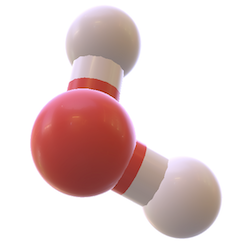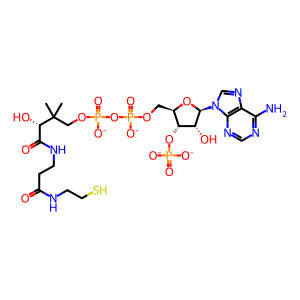Reaction: Cytosolic ACOTs hydrolyse MCFA-CoA, LCFA-CoA
- in pathway: Mitochondrial Fatty Acid Beta-Oxidation
The maintenance/regulation of cellular levels of free fatty acids and fatty acyl-CoAs (the activated form of free fatty acids) is extremely important, as imbalances in lipid metabolism can have serious consequences for human health. Free fatty acids can act as detergents to disrupt membranes so their generation is normally tightly regulated to states where they will be rapidly consumed or sequestered. Acyl-coenzyme A thioesterases (ACOTs) hydrolyse the thioester bond in medium- to long-chain fatty acyl-CoAs (of C12-C18 lengths) (MCFA-CoA, LCFA-CoA) to their free fatty acids (MCFA, LCFA) (Cohen 2013, Hunt et al. 2012, Kirkby et al. 2010). ACOTs that function in the cytosol are ACOT1 (Hunt et al. 2005), ACOT11 (Adams et al. 2001), ACOT12 trimer (Swarbrick et al. 2014), ACOT13 tetramer (Cao et al. 2009, Cheng et al. 2006), ACOT7 hexamer (Hunt et al. 2005b) and ACOT7L dimer (Jiang et al. 2006).
Recent mouse studies reveals a key regulatory role for PCTP in lipid and glucose metabolism. Phosphatidylcholine transfer protein (PCTP aka STARD2) is a member of the steroidogenic acute regulatory protein (StAR)-related lipid transfer (START) domain superfamily, a functionally diverse group of proteins that share a unique structural motif for binding lipids. PCTP appears to limit access of fatty acids to mitochondria by binding to (Ersoy et al. 2013) and stimulating the activity of acyl-coenzyme A thioesterase 13 (ACOT13, aka Acyl-CoA thioesterase 13, THEM2), an enzyme that catalyses the hydrolysis of acyl-CoAs to their free fatty acids (Kawano et al. 2014). Ultimately, insulin signaling is downregulated (Kang et al. 2010).
Recent mouse studies reveals a key regulatory role for PCTP in lipid and glucose metabolism. Phosphatidylcholine transfer protein (PCTP aka STARD2) is a member of the steroidogenic acute regulatory protein (StAR)-related lipid transfer (START) domain superfamily, a functionally diverse group of proteins that share a unique structural motif for binding lipids. PCTP appears to limit access of fatty acids to mitochondria by binding to (Ersoy et al. 2013) and stimulating the activity of acyl-coenzyme A thioesterase 13 (ACOT13, aka Acyl-CoA thioesterase 13, THEM2), an enzyme that catalyses the hydrolysis of acyl-CoAs to their free fatty acids (Kawano et al. 2014). Ultimately, insulin signaling is downregulated (Kang et al. 2010).
Reaction - small molecule participants:
CoA-SH [cytosol]
H2O [cytosol]
Reactome.org reaction link: R-HSA-5690043
======
Reaction input - small molecules:
water
Reaction output - small molecules:
coenzyme A(4-)
Reactome.org link: R-HSA-5690043


